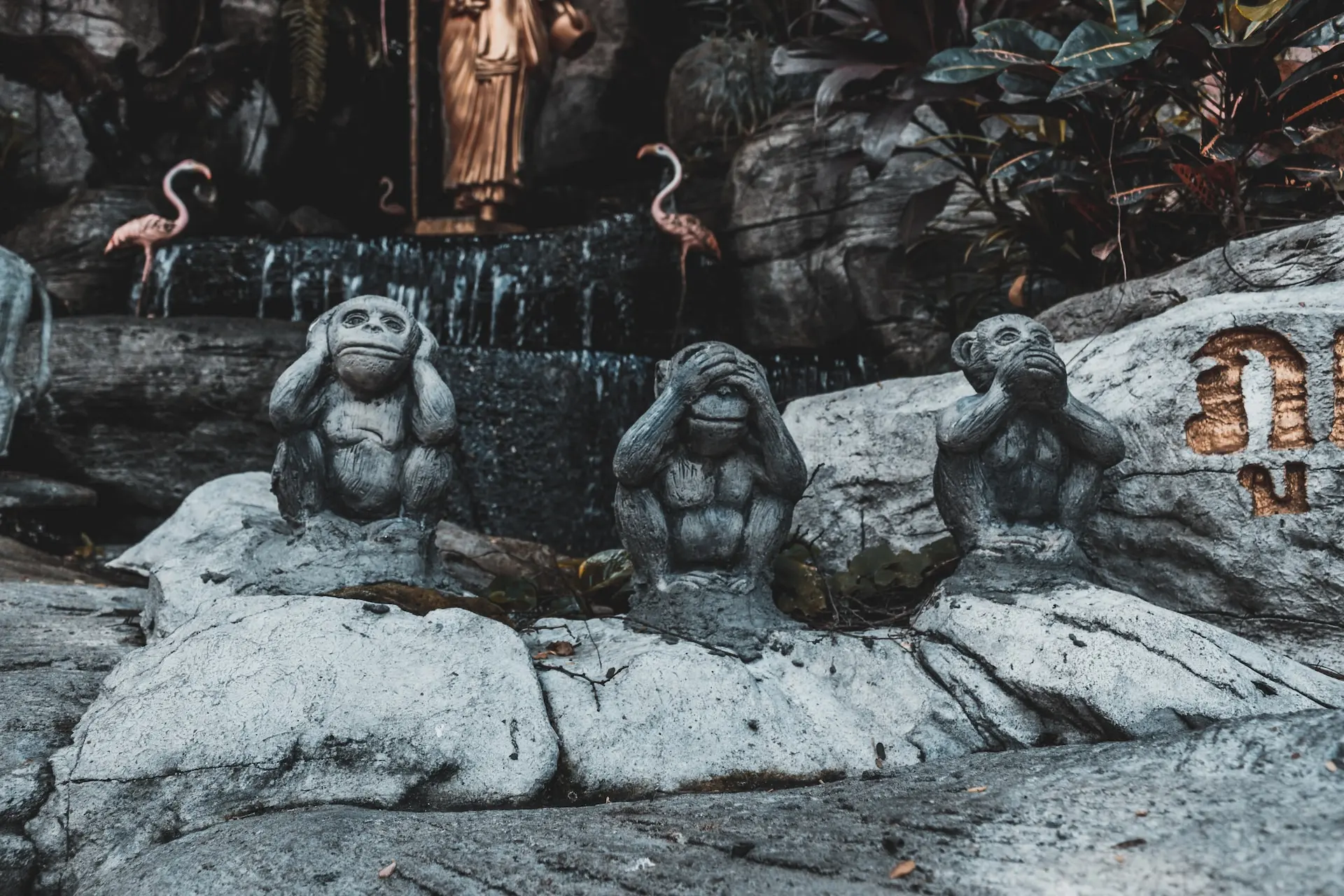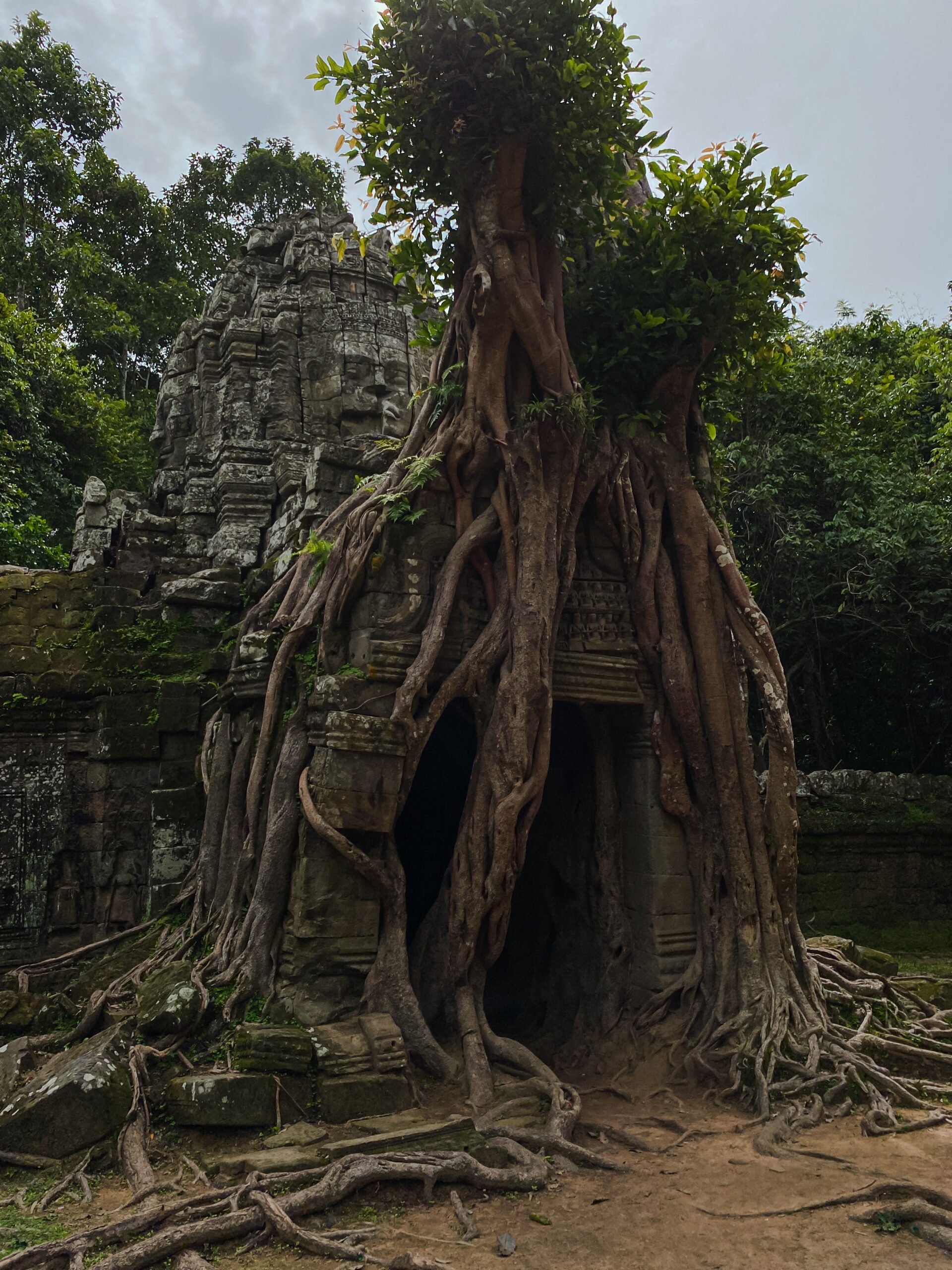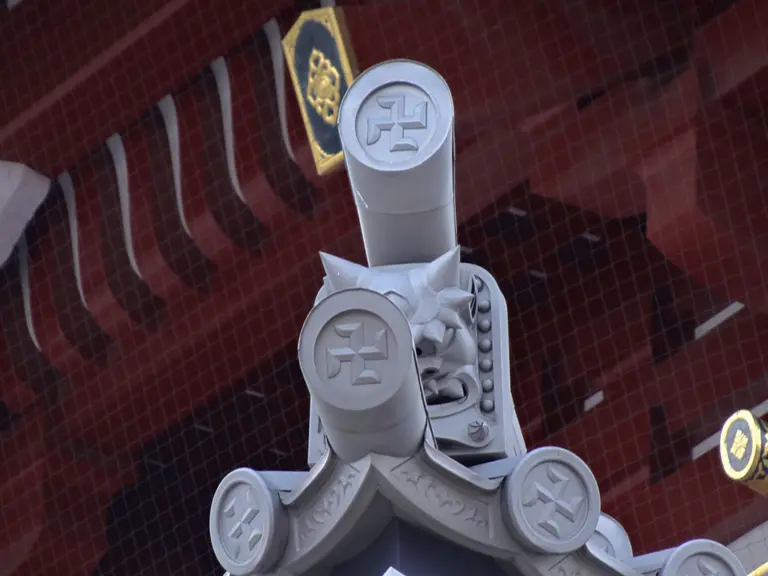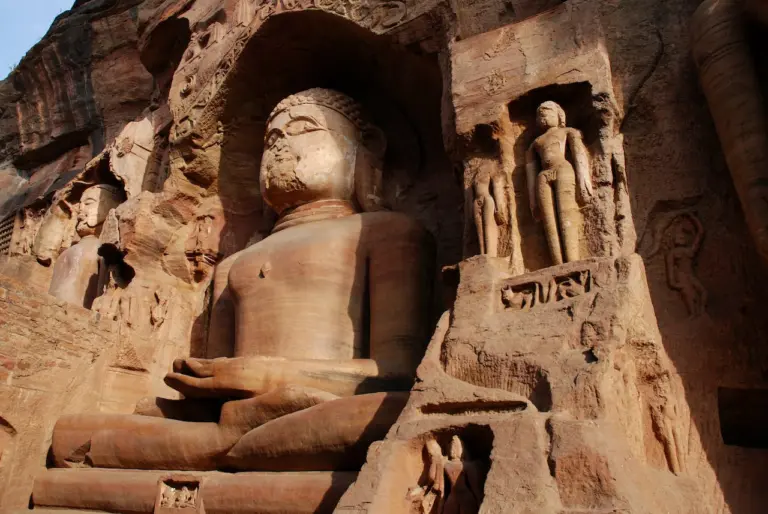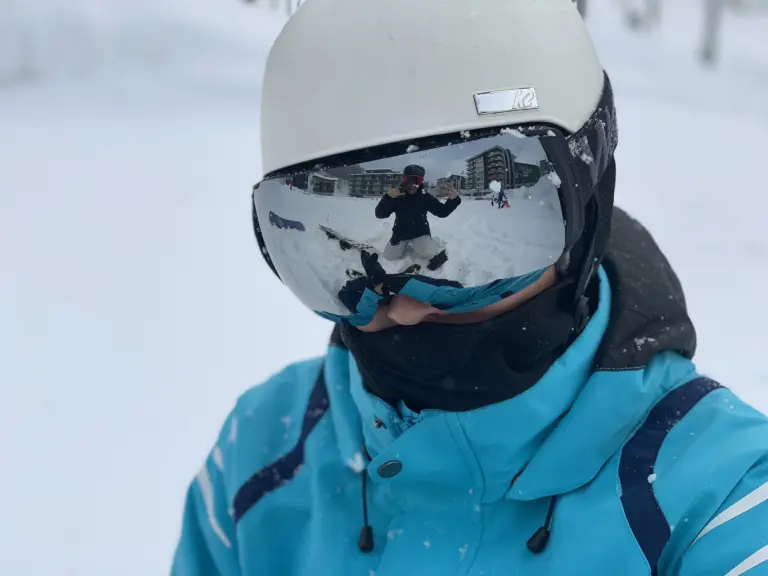There’s a magical quality to Kawaguchiko that’s hard to put into words.
For me, Kawaguchiko is a place where memories are made and hearts are touched. Where one can witness nature’s masterpieces, this charming town offers experiences that stay with you long after you’ve returned home.
One of the reasons why people visit Kawaguchiko is to see Mt. Fuji in various stunning backdrops so be forewarned that you’ll be seeing a lot the old majestic mountain throughout this post.
In this guide to Kawaguchiko, I want to share with you not just a list of activities but also the emotions and sensations that you too can experience.
From the changing season that paint the region in different hues to the simple joy of a lakeside walk, these are the moments that define a trip to Kawaguchiko.
So what are you waiting for?
Table of Contents
ToggleWhat to Know About Kawaguchiko
Kawaguchiko, or Lake Kawaguchi, is part of the scenic Fuji Five Lakes region, located at the base of Mt. Fuji, Japan’s iconic and highest peak. The lake’s origin is geological, formed by the lava flow from Mt. Fuji’s multiple eruptions over the millennia.
The area around Kawaguchiko has been a place of inspiration for centuries. Early historical records depict pilgrims making their way to Mt. Fuji, often stopping at Kawaguchiko to admire the breathtaking reflection of the mountain in the lake’s calm waters. Which is quite similar to the scenery found in Sayama and Hakone!
The landscape around Kawaguchiko was also a favored subject for ukiyo-e artists, like Hokusai and Hiroshige, who captured the beauty of Mt. Fuji from various viewpoints.
Best Places to Visit in Kawaguchiko
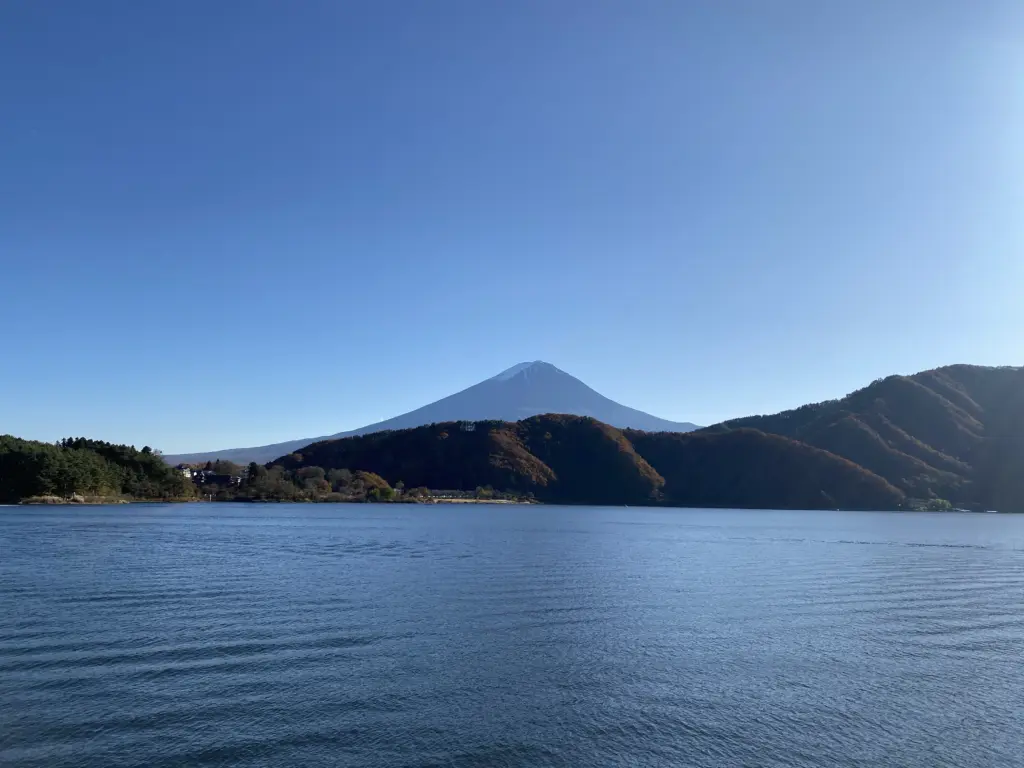
1. Lake Kawaguchi
Lake Kawaguchi is the largest and arguably the most famous of the Fuji Five Lakes.
With a surface area of approximately 15.8 square km (6.1 sq m) and a depth reaching up to 44 m (144 ft), it offers one of the best views of Mt. Fuji. People flock to its shores to capture photographs of Mt. Fuji’s reflection in the water.
The surroundings of Lake Kawaguchi are marked by beauty and seasonal changes. In the spring, cherry blossoms bloom along the lake’s shores, while autumn sees the area enveloped in rich, fiery colors.
It’s a scene that constantly evolves, offering something new with each passing season.
Cost: Free
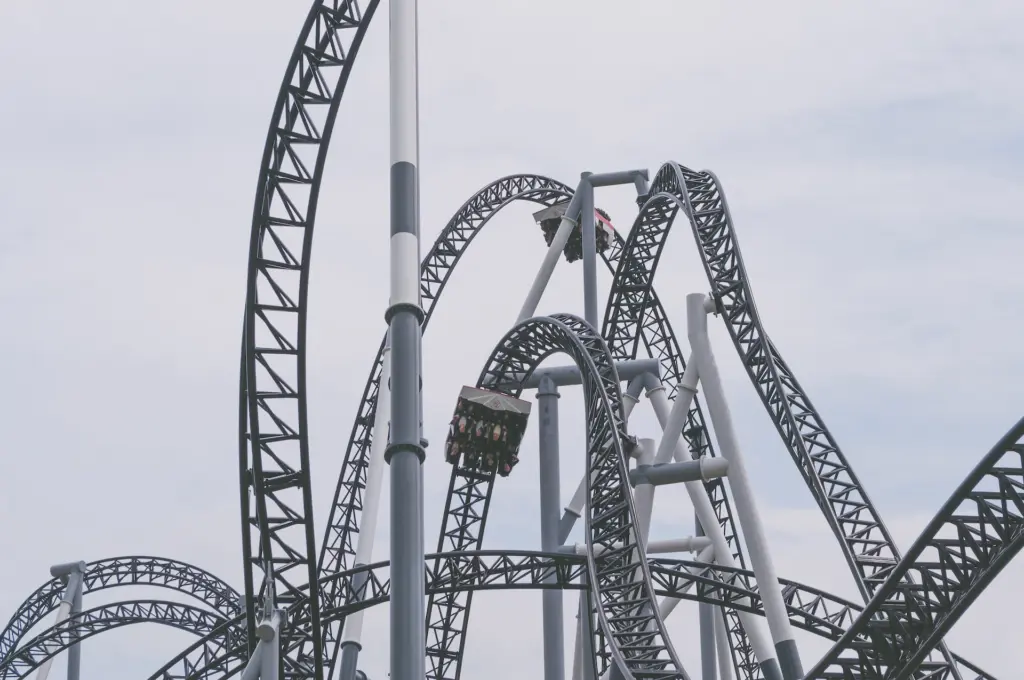
2. Fuji-Q Highland
In for a thrill? Fuji-Q Highland is an exhilarating amusement park that hosts four major roller coasters that will definitely put your bravery to the test.
Fujiyama, once the world’s tallest roller coaster, offers an impressive 79-meter height and reaches speeds of 130 km/h.
Dodonpa is known for its intense acceleration, going from 0 to 180 km/h in just 1.56 seconds.
Eejanaika is a unique 4D coaster that rotates riders a full 360 degrees, while Takabisha holds the record for the steepest drop in the world at 121 degrees!
In addition to its thrill rides, Fuji-Q Highland caters to fans of popular anime, including “Evangelion” and “Attack on Titan,” with themed attractions and interactive exhibits. There are also gentle rides kids so there’s something for everyone!
Click the link to get your 1-Day Pass Ticket for Fuji-Q Highland if you’re keen on trying out the monster rides.
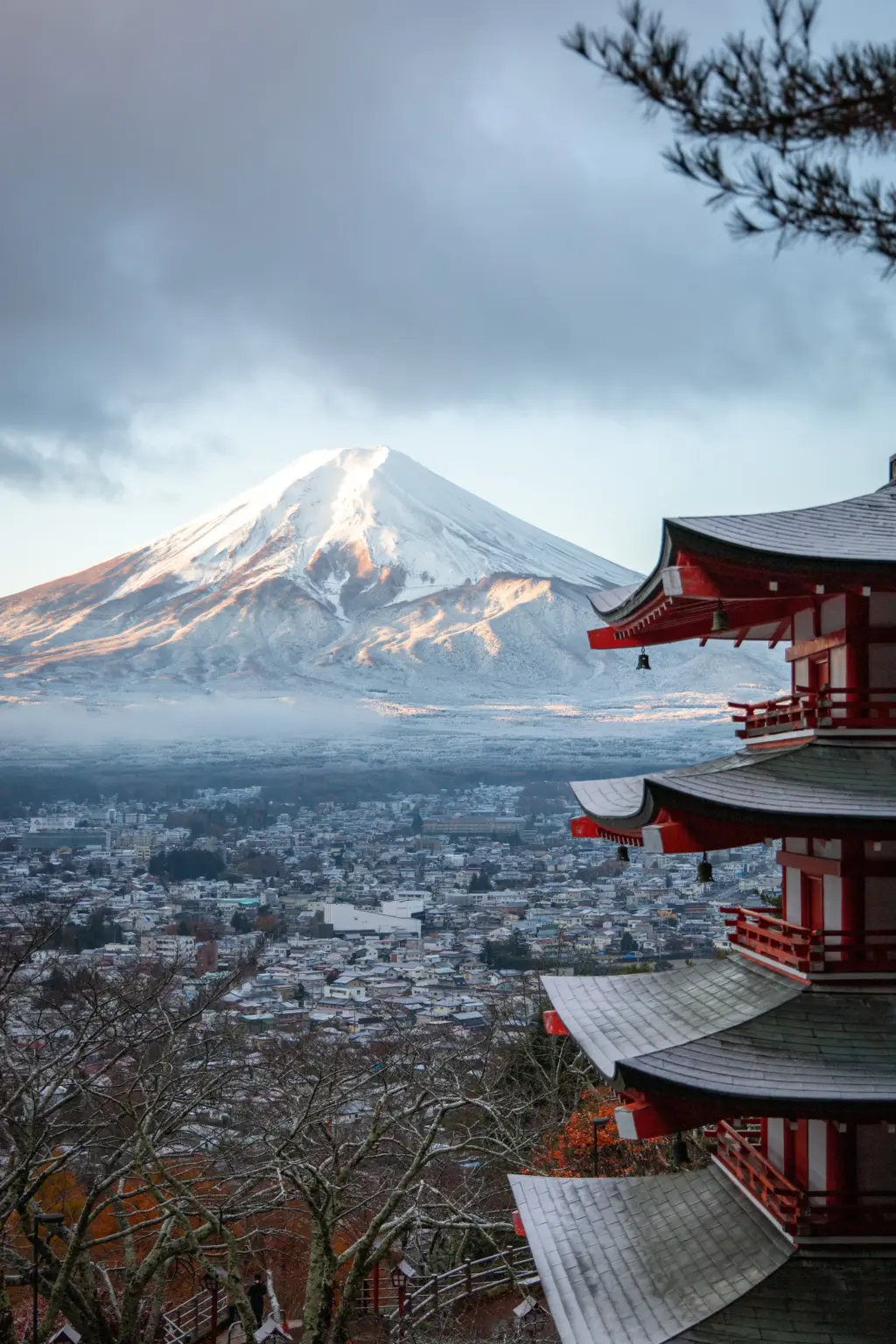
3. Arakurayama Sengen Park
Arakurayama Sengen Park is home to the Chureito Pagoda, a five-storied pagoda that was built as a peace memorial in 1963.
It is part of the Arakura Sengen Shrine complex, a Shinto shrine dedicated to the worship of Mt. Fuji, and it offers one of the most iconic views of Mt. Fuji, particularly during the cherry blossom season when over 600 cherry trees bloom around the pagoda, or during the autumn when the leaves change colors.
It has become one of the most photographed spots in Japan, and I’m sure everyone has seen that shot at one point whether it’s on a post-card or a cover of a magazine.
Reaching the Chureito Pagoda requires a climb of 398 steep steps, but the reward is a view that captures the essence of Japan.
Cost: Free
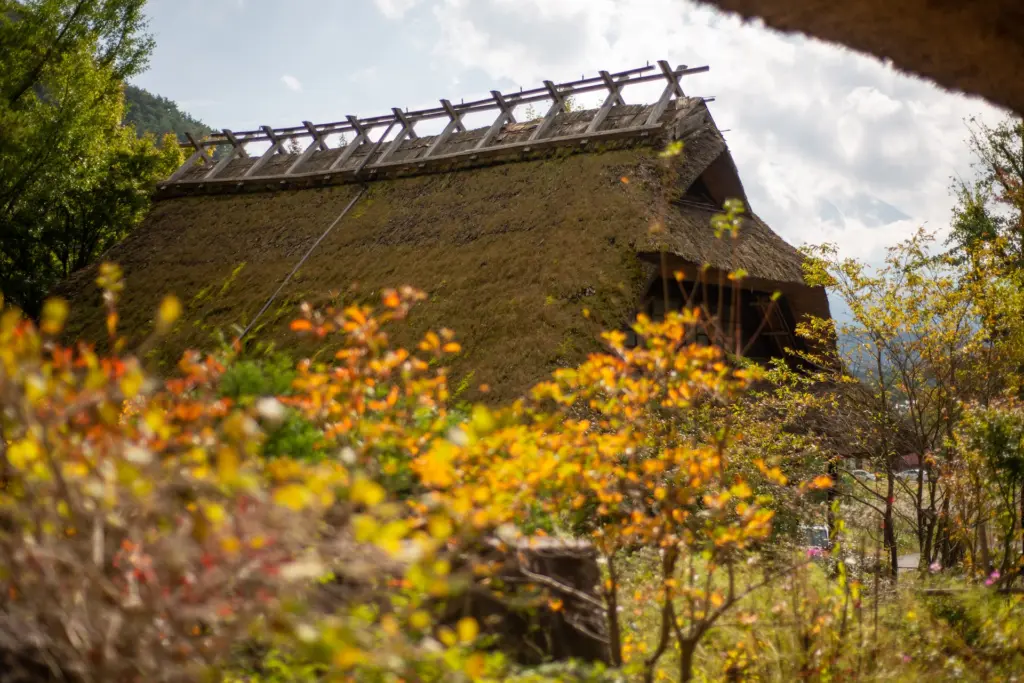
4. Saiko Iyashi-no-Sato Nenba
Saiko Iyashi-no-Sato Nenba is a picturesque open-air museum located on the banks of Lake Saiko, another one of the Fuji Five Lakes.
This charming village offers an incredible insight into traditional Japanese culture, as well as the stunning natural beauty of the area.
Originally, Saiko Iyashi-no-Sato Nenba was a farming village until it was destroyed by a typhoon in 1966.
In an effort to preserve the cultural heritage, it was reconstructed into a museum that showcases over 20 traditional thatched-roof houses.
Within these historical structures, various workshops are conducted, allowing you to dive into the world of traditional Japanese arts and crafts. From pottery and indigo dyeing to weaving and papermaking, you have the opportunity to learn and create with the guidance of expert artisans.
Furthermore, the village itself is designed as a living exhibit, as you’ll find gardens with native plants, koi ponds, and stone pathways that add to the calming atmosphere.
A walk through the village can feel like stepping back in time, allowing you to appreciate the slow and careful life that once dominated this region.
Cost: 500 JPY
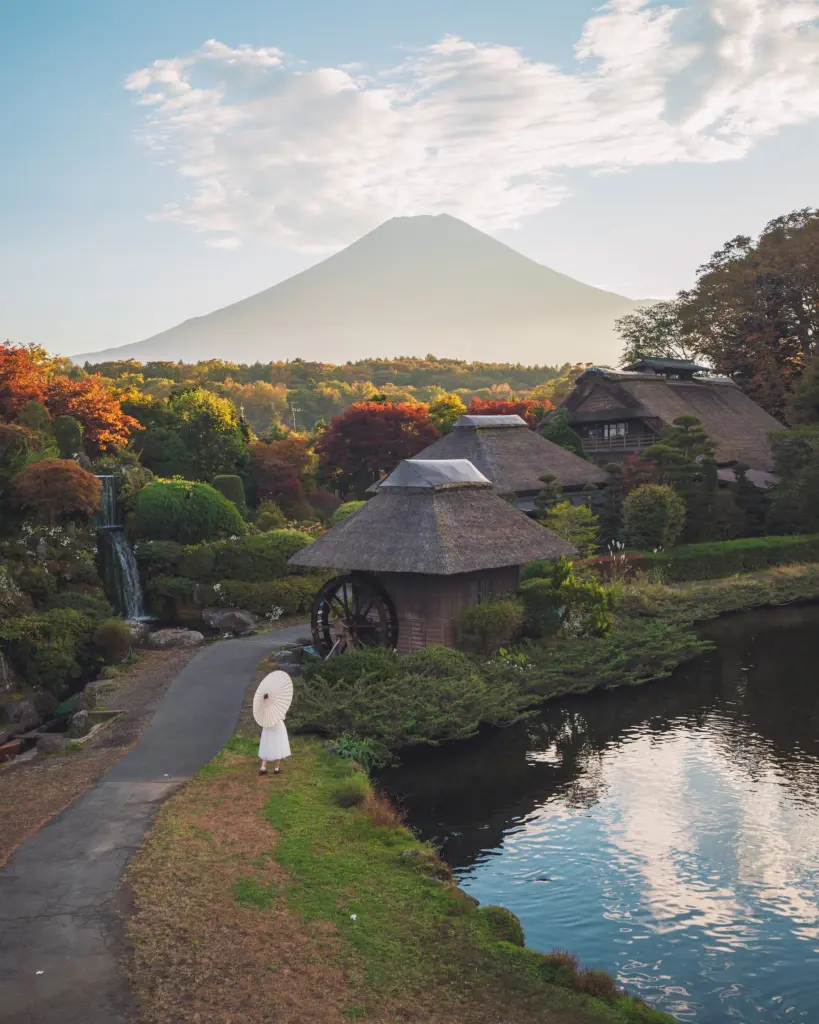
5. Oshino Hakkai
Oshino Hakkai is another tranquil village, renowned for its eight natural springs.
These springs are fed by the melting snow of Mt. Fuji, and the water that filters through the volcanic rock over decades emerges in Oshino Hakkai as crystal-clear ponds, filled with unique aquatic plants and fish.
The water is so pure that it’s considered one of the 100 Best Springs of Japan!
Each of the eight ponds has a distinct character, with different depths and clarity, and they are all connected through a network of gentle streams. Walking paths meander through the village, allowing you to explore these natural wonders at a leisurely pace.
The largest pond, Wakuike, is particularly famous for its exceptional clarity and amazing aesthetic with the traditional houses as a backdrop.
The village itself, framed by traditional thatched-roof houses, offers a snapshot of rural Japanese life, preserving the customs and architecture of a bygone era.
Many of the old farmhouses are now shops or restaurants, and you can sample local specialties, like the fresh-water delicacies cooked to perfection or the renowned “yokan,” a sweet bean jelly.
You can join Mt. Fuji tours that include Oshino Hakkai through here.
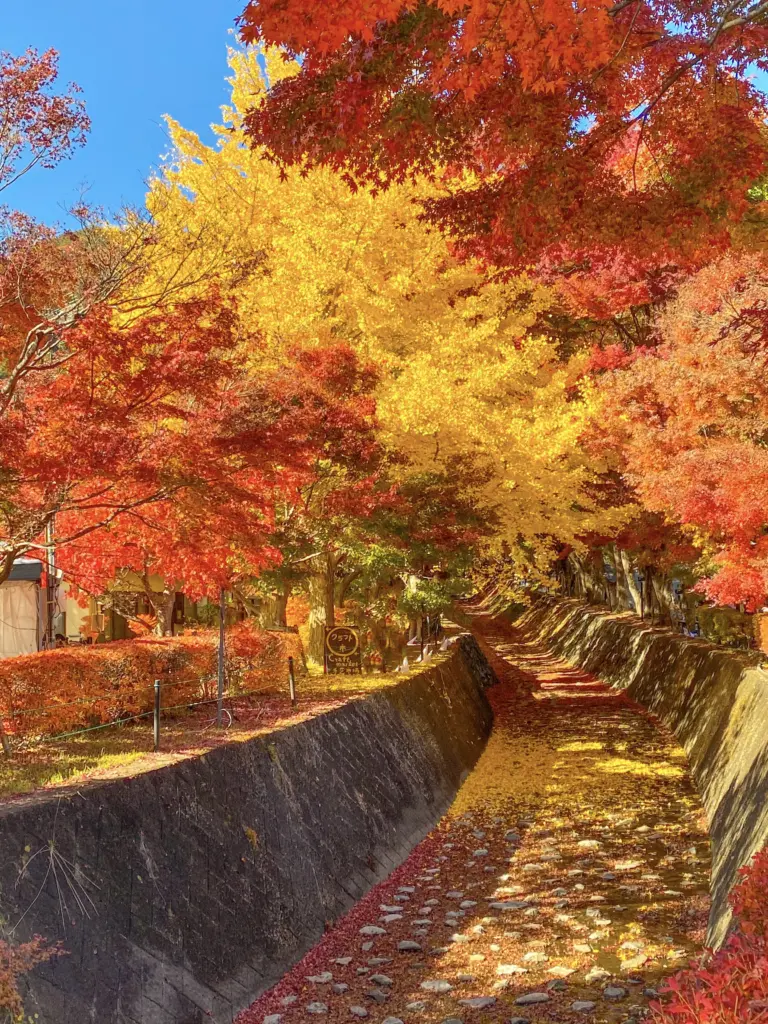
6. Momiji Corridor
If you’re planning on visiting in autumn, then the Momiji Corridor is where you have to go.
It’s actually the place that drew me in the first place.
The Momiji Corridor, Momiji meaning Maple, is a picturesque pathway lined with brilliant maple trees on both sides. Though the crowds can be quite daunting, going through this fiery canopy of red, orange, and yellow is a beautiful experience. The trees arch over the pathway, forming a natural tunnel that’s a feast for the eyes.
During fall, the corridor hosts the Kawaguchiko Momiji Festival, an event celebrating the autumn colors. Stalls selling local food and crafts line the streets, and the area is illuminated at night, creating a magical ambiance that extends into the evening.
Cost: Free
7. Kitaguchi Hongu Fuji Sengen Shrine
Tucked away in the dense forest at the base of the Mt. Fuji, this Shinto shrine is a place steeped in a mystical aura that seems to permeate the entire complex.
Originally established over 1900 years ago, the Kitaguchi Hongu Fuji Sengen Shrine is one of the starting points for the Yoshida Trail, the route that countless pilgrims and hikers have taken over the centuries to reach the summit of the sacred mountain.
The shrine’s architecture is stunning, with its intricately carved wooden gates, moss-covered stone lanterns, and timeless buildings that wear the patina of history with grace. The main hall, built in the traditional Nagarezukuri style, is designated as a cultural property.
Cost: Free
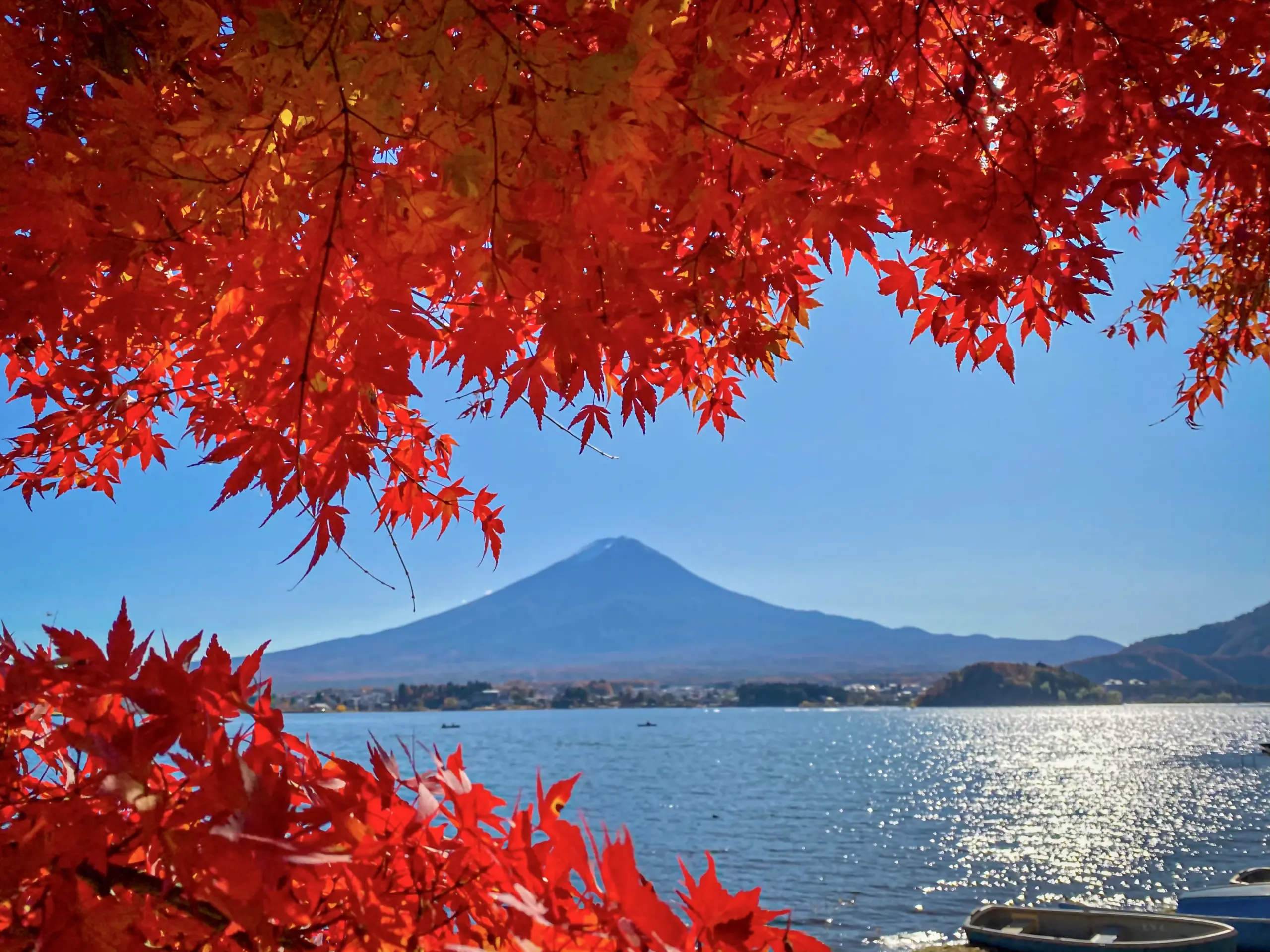
8. Oishi Park
Nestled on the northern shores of Lake Kawaguchi, Oishi Park offers a panoramic spectacle that’s forever etched in many hearts.
Oishi Park is a sensory delight that changes with the seasons. During spring, the area blooms with colorful tulips, while summer brings on the fragrant lavender fields.
Autumn transforms the park into a kaleidoscope of reds from the kochia and in winter, you can see the snow-capped summit of Mt. Fuji in all its glory.
No matter what draws you to Oishi Park, whether it’s the seasonal blooms, the striking landscape, or simply the calm that comes from being in a beautiful natural setting, it always seems to offers an enriching experience.
It’s also one of the few places where I found a restaurant while cycling around Lake Kawaguchi.
Cost: Free
Where to Stay in Kawaguchiko
Kawaguchiko is home to some of the most home-y and not to mention tranquil establishments, most of them offer unparalleled views of Mt. Fuji with Lake Kawaguchi just right in front of your window.
During the summer, when it’s the peak time to climb Mt. Fuji, Kawaguchiko’s prices tend to sky-rocket so it would be best to book accomodations at a less busy season.
Nevertheless, here are some of my curated recommendations if you’re staying in the area:
Best Hotels in Kawaguchiko:
- Fujikawaguchiko Resort Hotel – offers a range of amenities including a garden, free private parking, and an on-site restaurant. You can benefit from free shuttle services, luggage storage, and complimentary WiFi throughout the property. The hotel’s air-conditioned rooms come equipped with practical amenities like a desk, electric tea pot, fridge, safety deposit box, flat-screen TV, and a private bathroom with a bidet. The multilingual staff, speaking English, Japanese, and Chinese, are readily available to assist.
- Fuji Osenji Yumedono – this luxurious ryokan offers an exclusive experience with features such as in-room hot springs, traditional Japanese cuisine in the dining area, and a beautiful garden. The ryokan’s well-appointed suites boast private outdoor hot-spring baths (onsen), flat-screen cable TV, DVD player, and essential amenities like a bathtub and hairdryer in the private bathroom.
- Hananoyado Yumefuji – offers a unique accommodation experience with each room featuring a private garden with a terrace.This villa ensures you’ll have modern conveniences, with air-conditioned rooms that include a wardrobe, flat-screen TV, private bathroom with free amenities, and a kitchenette complete with a fridge. Breakfast is thoughtfully provided daily as a morning basket (bento).
Best Hostels in Kawaguchiko:
- Hostel Michikusa-ya – enjoy the convenience of free private parking and the relaxation of a shared lounge and garden. The air-conditioned rooms, equipped with shared bathrooms, come with complimentary WiFi access. The property features a shared kitchen, along with free shuttle service and luggage storage.
- Kagelow Mt. Fuji Hostel – designed to cater to travelers from across the globe. Once an old hotel, it has been rebuilt into a hostel that embraces a modern Japanese-style concept, infusing it with a touch of traditional Japan. The renovation of the hostel involved using wood from a 150-year-old Japanese house, retaining the charm of old Japanese materials and traditional items, such as Tatami mats, which add a relaxed feel to the rooms.
- Dot Hostel & Bar – this hostel is built on the concept of encouraging everyone to meet new people, explore new cultures, and have new experiences, the property offers a lively and inviting atmosphere. The wide lobby space, filled with many board games and a big screen, serves as a common area to socialize. There is also a bar on-site where guests can indulge in local beer and Japanese sake.
Hidden Gems in Kawaguchiko
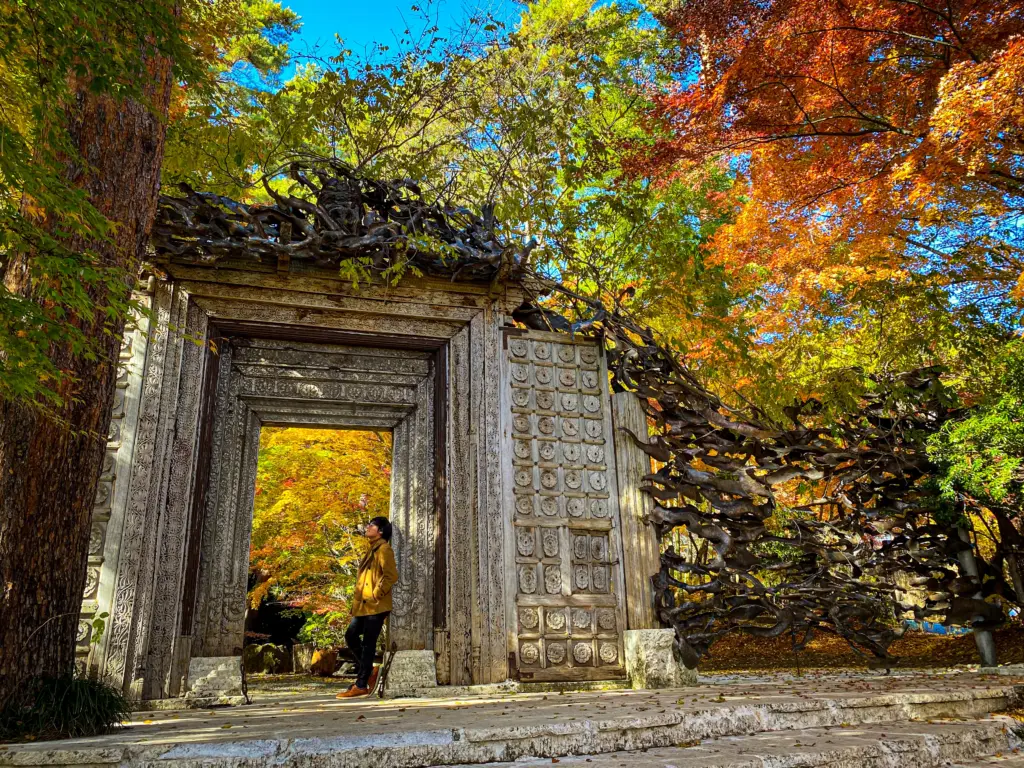
9. Kubota Itchiku Art Museum
The Kubota Itchiku Art Museum stands as a showcase for the works of Itchiku Kubota, an extraordinary textile artist who revived and transformed the ancient kimono-dyeing technique known as “Tsujigahana.”
The museum itself is a piece of art, from the decidous main gate to the elegant wooden architecture that blends seamlessly with the surrounding natural beauty.
Inside, the main exhibition hall holds an awe-inspiring collection of Kubota’s masterpieces. His most famous work, the “Symphony of Light,” is a series of kimonos that together form a stunning panorama of Mount Fuji across different seasons.
Cost: 1,300 JPY
10. Lawson At Kawaguchiko Station
A Lawson might seem like an odd recommendation, as it’s essentially a convenience store located near the Kawaguchiko train station.
Yet, it has become something of a local landmark and its aesthetics.
What sets this particular Lawson apart from others is its strategic location and spectacular view of Mt. Fuji. Positioned just right above the store stands an unobstructed, picture-perfect view of Japan’s iconic peak.
Cost: Free
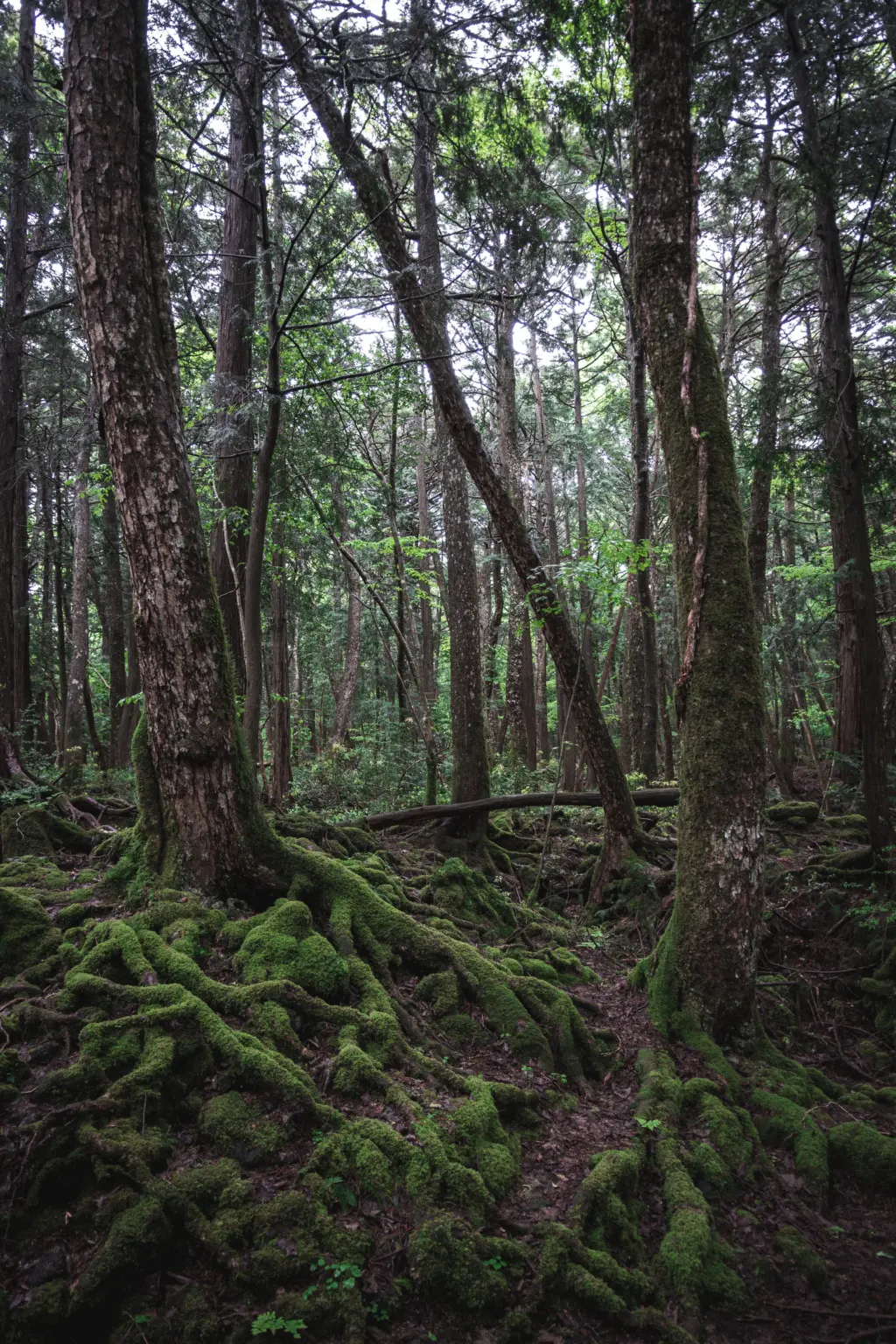
11. Aokigahara Forest
Aokigahara Forest is lovingly known as the “Sea of Trees”. It’s a vast forest that sprawls at the base of Mt. Fuji.
Covering an area of around 35 sq km (14 sq mi), Aokigahara Forest is unique in its terrain. The ground is uneven and filled with caverns and crevices since it formed on top of hardened lava following an eruption of Mt. Fuji over a millennium ago.
The forest is so dense that it can become nearly dark in broad daylight, and the absence of wildlife creates an uncanny silence.
As many might know, this beautiful forest has a darker side. Aokigahara has become known as a place where people go to end their lives, and this reputation deeply overshadows the forest’s natural beauty.
Nevertheless, there are plenty of trails that are safe for public use, you can also join guided tours as well if you’re afraid of getting lost.
Cost: Free
12. Narusawa Ice Cave
The Narusawa Ice Cave was formed over 1,150 years ago following an eruption of Mt. Fuji. Legend has it that it’s connected to the Iwaya Caves of Enoshima, all the way in Kamakura!
As you descend into the depths of the cave, the temperature drops significantly, and the walls become adorned with these striking icicles even during the summer months.
The cave maintains a constant temperature of around 3°C (37°F), preserving its icy features year-round. The passage through the cave leads you through narrow and twisting paths, and the glistening ice contrasts beautifully with the dark, rocky surroundings.
In the past, the ice from the cave was considered sacred and used in various ceremonies at the Imperial Court. It was also utilized to store silkworm eggs, as the constant cold temperature provided the ideal conditions for preservation.
Though the walk is not particularly long (10 minutes), the cave’s low ceilings and narrow passages can still make it a very memorable experience.
Cost: 350 JPY
Top Things to Do in Kawaguchiko
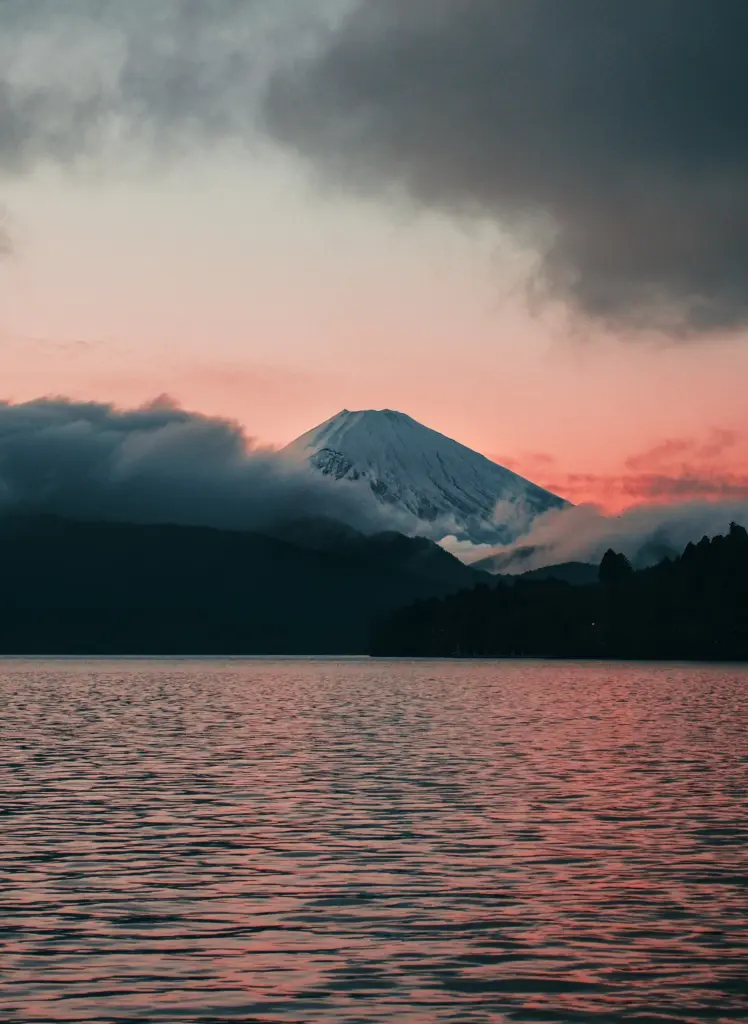
13. Take Beautiful Photos of Mt. Fuji
Capturing the grandeur of Mt. Fuji is an experience that many travelers to Kawaguchiko yearn for, and it’s easy to see why.
As Japan’s highest peak and an iconic symbol of the country, Mt. Fuji presents a majestic sight that inspires anyone who catches a glimpse of it. I can never get tired of Mt. Fuji, no matter how many times I’ve already seen it.
The region around Lake Kawaguchi provides numerous vantage points to frame Mt. Fuji in all its glory. Depending on the season and weather conditions, the mountain’s appearance can change dramatically, offering unique opportunities to practice your photography composition.
During the early morning, when the air is crisp, you might capture Mt. Fuji with a perfect reflection in the calm waters of Lake Kawaguchi. In the autumn months, the colorful foliage of the nearby forests adds a vibrant contrast to the snow-capped peak.
Winter brings clear skies and a stark, monochromatic beauty, while spring offers a chance to photograph the mountain with cherry blossoms in the foreground.
14. Shred Some Powder at Fujiten Snow Resort
If you’re visiting Kawaguchiko in the winter and have a love for snow sports, Fujiten Snow Resort is a destination that should not be missed. It’s one of the few snow resorts that can be easily done as a day trip from Tokyo.
Fujiten Snow Resort boasts well-maintained slopes that cater to various skill levels, its got gentle trails and some challenging runs. It’s here that I first tried to ride a snowboard, only to fail miserably. I later tried my hand at it again at Niseko, where I was finally able to thrive!
The resort’s elevation ensures good snow quality throughout the season, and the modern snowmaking equipment supplements the natural snowfall, keeping the trails in excellent condition.
There’s also an indoor “Kids Land” where little ones can play with sleds and other snow toys.
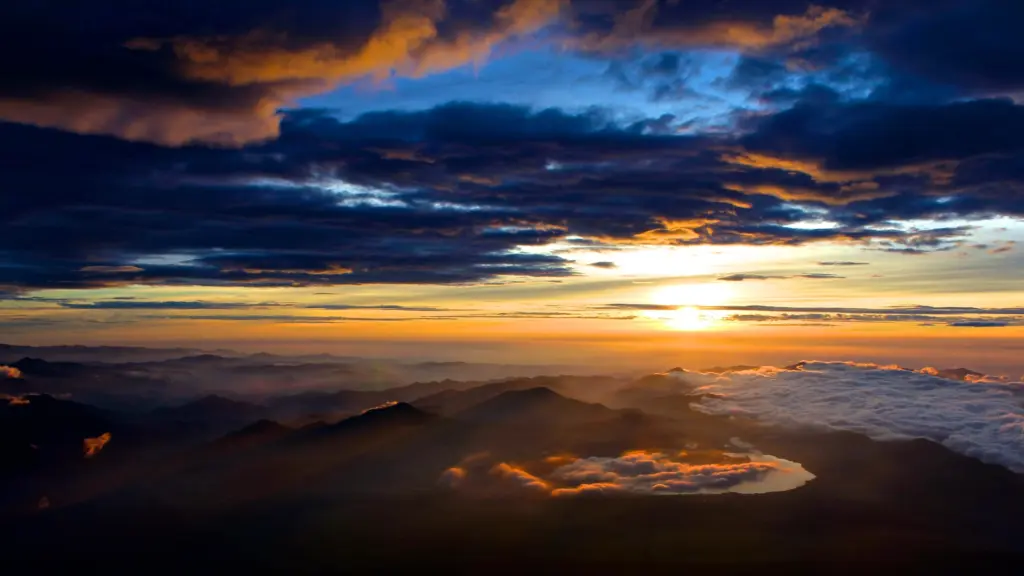
15. Paraglide Around Mt. Fuji
The Asagiri Kogen Paragliding School provides the unique opportunity to soar through the skies, with Mt. Fuji as the awe-inspiring backdrop.
Located on the Asagiri Plateau, this school offers paragliding experiences for both beginners and seasoned fliers. The professional and highly experienced instructors guide will guide you through the entire process, ensuring safety and comfort at all times.
For those new to paragliding, tandem flights with an instructor are available. These allow you to enjoy the thrill of flight without the need for prior experience. Strapped securely to a qualified instructor, you’ll launch from the gentle slopes of the plateau and rise into the air, carried by the wind and thermal currents.
As you ascend, the view of Mt. Fuji becomes increasingly breathtaking, appearing almost surreal as it dominates the horizon.
16. Relax in an Onsen with a View
Relaxing in an onsen while enjoying the majestic view of Mt. Fuji is one of the quintessential experiences you can have in Kawaguchiko. Here’s a look at some onsens where you can indulge:
Fuji Yurari Onsen: Enjoy breathtaking views of Mount Fuji from the outdoor baths at this location. The unique setting offers exceptional vistas, particularly during sunset.
Benifuji no Yu: Bathe with a spectacular view of both Mount Fuji and Lake Yamanaka. This onsen allows you to connect with nature and enjoy the tranquility of the surroundings, all while indulging in soothing hot spring water.
Ishiwari no Yu: Known for its rocky interior, this onsen is surrounded by the beautiful forests of the Yamanaka area. It’s an ideal place to unwind and take in nature.
Koraku Onyado Fujiginkei: For an authentic ryokan experience, this traditional onsen ryokan offers beautiful garden views. The outdoor baths are set within a tranquil garden, adding to the charm.
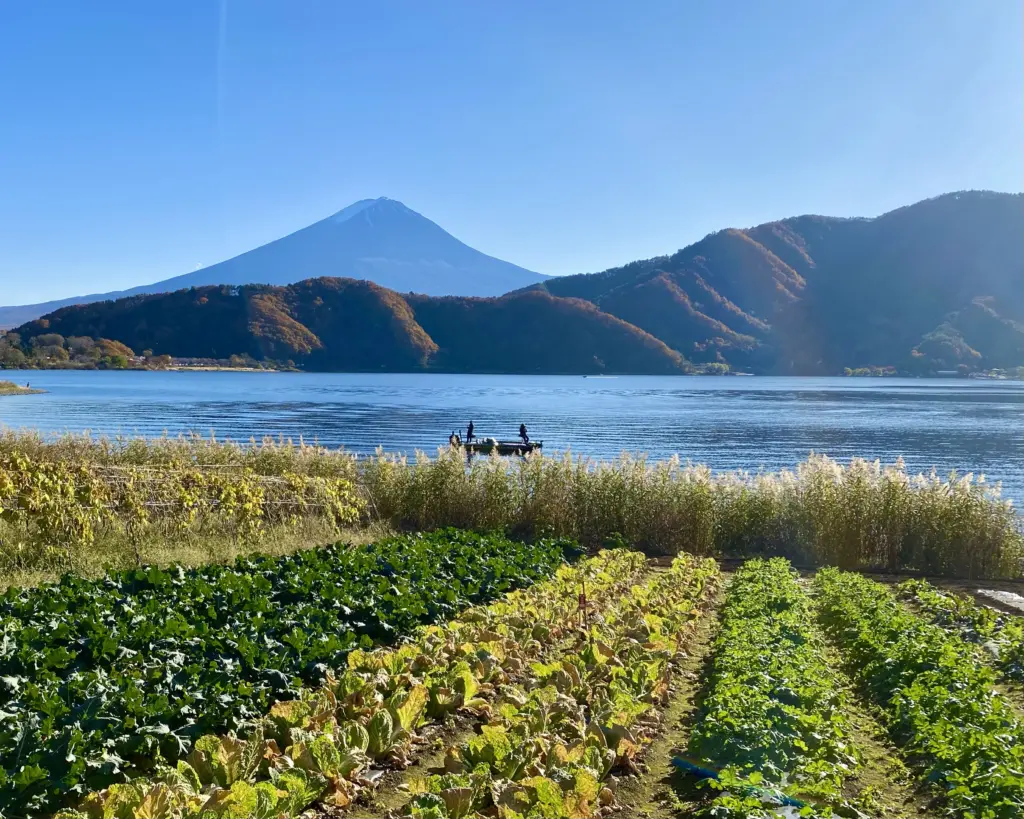
17. Cycle Around Lake Kawaguchi
The natural beauty of Kawaguchiko is something that not only can be seen but also felt as you pedal your way around the shimmering lake.
The cycling path around Lake Kawaguchi is approximately 20 km (12 mi) long and offers a pleasant route that’s suitable for riders of all levels. You can take it at a leisurely pace, pausing to take in the landscapes and going down at the various hot spots around the area.
Rental bikes are available near the station, with options ranging from standard bicycles to e-bikes. You might have to call to make a reservation or get there earlier to secure yourself a bike.
I did the cycling trip around autumn which is one of the best times to do it, in my opinion. You can read more at my post on Cycling Around Lake Kawaguchiko.
18. Ride the Mt. Fuji Panoramic Ropeway
Starting from the eastern shore of Lake Kawaguchi, the Mt. Fuji Panoramic Ropeway lifts you up to an elevation of about 1,075 m (3,525 ft), leading to the observatory at the summit of Mt. Tenjo.
The ascent itself is an exciting part of the experience, as you find yourself smoothly gliding over lush forests and terrains that gradually reveal a panoramic view of the area.
Once you reach the summit, the view is nothing short of breathtaking. The majestic Mt. Fuji stands tall in the distance, framed by Lake Kawaguchi’s sparkling waters and the vibrant hues of the land.
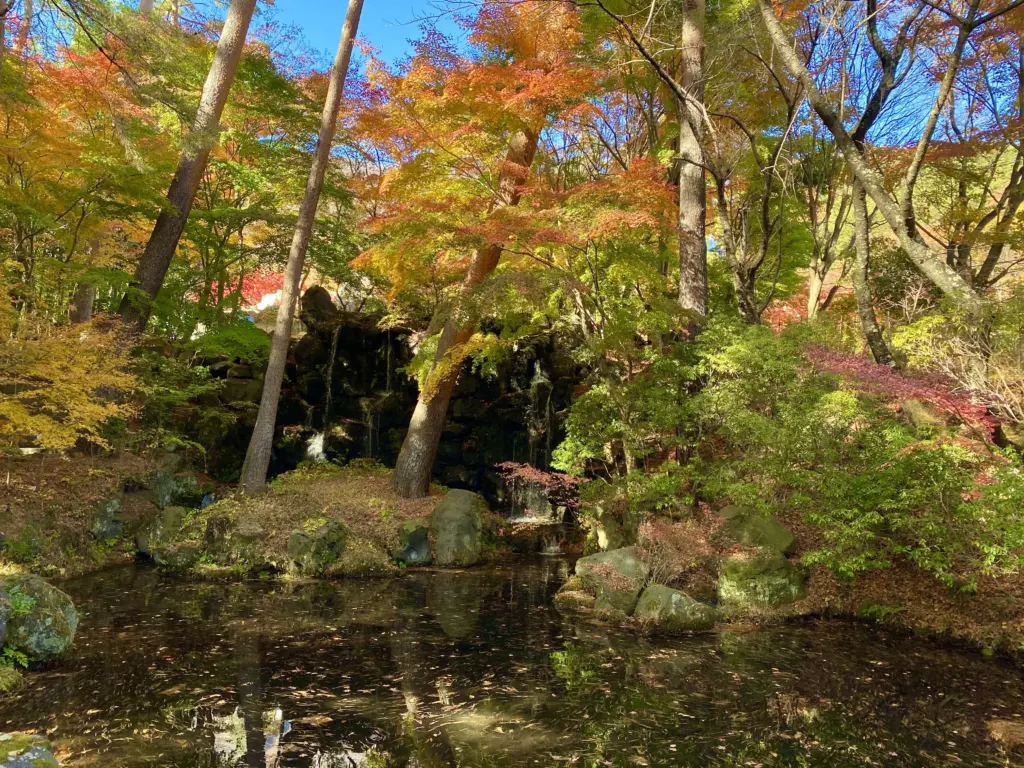
19. Go Museum-Hopping
From classic art to innovative displays, Kawaguchiko is packed with museums. Here’s a look at some of the top museums you can explore:
-
Yamanashi Gem Museum: If you’re fascinated by gemstones, this museum hosts an extensive collection of rare and beautiful gems from around the world.
-
Kawaguchiko Museum of Art: Showcasing contemporary Japanese and Asian art, this museum highlights local talents and offers changing exhibitions that keep the experience fresh.
-
Music Forest Museum: An enchanting museum that feels like stepping into a fairytale, it’s dedicated to automatic musical instruments and features beautiful gardens, live music performances, and more.
-
Yamanashi Prefectural Museum: This museum offers an insight into the history and cultural heritage of Yamanashi Prefecture, featuring archaeological artifacts, folklore, and more.
How to Get Around Kawaguchiko
- Bus: There are local and sightseeing buses, including the Omni, Fujikko, Mt. Fuji World Heritage Loop, and regular buses.
- Rental Car: Car rental services are recommended if you’re someone who prefers to drive and explore at the area at your own pace.
- Bicycle: As mentioned before, bikes are a great way to explore the lakeside.
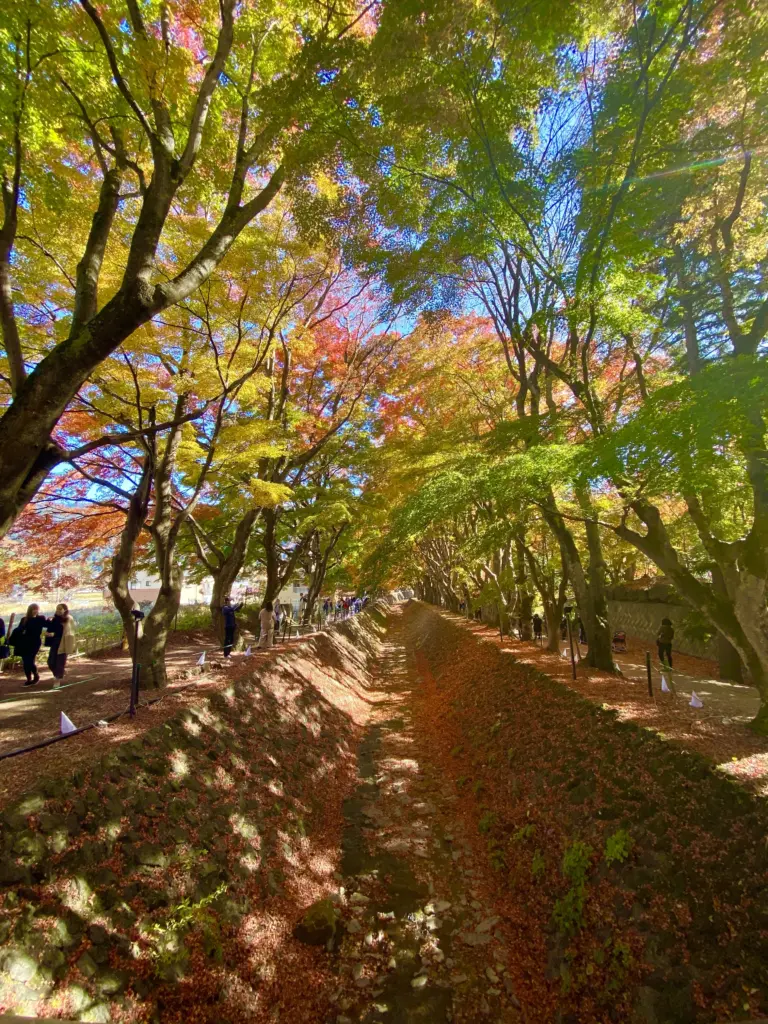
Best Time to Visit Kawaguchiko
- Spring (March to May): With cherry blossoms blooming, spring offers stunning views of Mt. Fuji paired with the colorful scenery. The temperatures are mild, and the weather is generally pleasant.
- Summer (June to August): Summer is famous for being Mt. Fuji climbing season. Plus, the area around Kawaguchiko tends to be not too hot nor humid so it’s still a good time to visit.
- Autumn (September to November): Autumn brings vibrant fall foliage, and is arguably one of the best times to visit though that just may be my biased opinion.
- Winter (December to February): Winters are cold but clear, often providing the best views of Mt. Fuji.
When planning your trip to Kawaguchiko, consider securing your journey with SafetyWing Insurance. SafetyWing offers comprehensive travel insurance that covers medical emergencies, trip cancellations, and other unexpected events. Click the link to explore their packages and ensure a safe and worry-free travel experience.
How to Get to Kawaguchiko
By Bus:
From Shinjuku Station: Fujikyu and Keio Bus run about two direct buses per hour from Shinjuku Bus Terminal to Kawaguchiko Station. The trip takes slightly under 2 hours and costs 2000 yen. Buses may also continue to Lake Yamanakako.
From Tokyo Station: Buses operated by Fujikyu and JR Kanto Bus connect Tokyo Station (Yaesu South Exit) with Kawaguchiko Station, about 1 to 2 times per hour. The journey is 2 hours long and costs 2000 yen.
From Shibuya Station: Fujikyu offers a service every two hours from Shibuya (Mark City) to Kawaguchiko Station, Fuji Q Highland, and Fujisan Station. Expect a 2 to 2.5-hour trip, costing 2000 yen.
By Train:
From Shinjuku Station: Start by taking the JR Chuo Line to Otsuki Station (70 minutes, 2360 yen for direct limited express; 100 minutes, 1340 yen for local trains). Then transfer to the Fujikyu Railway Line to reach Kawaguchiko Station (55 minutes, 1170 yen).
Direct Limited Express Trains: A few direct limited express trains operate daily between Shinjuku and Kawaguchiko. These take about 2 hours, costing around 4000 yen, and seat reservations are mandatory.
By Tour:
Alternatively, you can also join tours departing from Tokyo that will take you to Mt. Fuji and Kawaguchiko such as this 1-Day Scenic Bus Tour.
- There is also a Private Tour available for a more intimate experience.
Plan Your Trip to Japan | Best Travel Resources
Book Your Accommodations
- Booking.com – the world’s leading online booking platform for accomodations around the world, they have an extensive amount of available listings with zero booking fees and best price guarantees.
- Hostelworld – a backpacker’s best friend, Hostelworld has the largest collection of hostels and guesthouses for affordable prices.
Don’t Forget Insurance
- SafetyWing – from Nomad Insurance, an insurance by nomads for nomads. They understand our lifestyle well and have really comprehensive and flexible plans that cater to any traveler.
Find Cheap Flights
- Kiwi.com – my go-to for booking and finding the cheapest flights and it’s helped me save tons of money. They do virtual interlining which is connecting flights from airlines that do not codeshare, so you can find routes that you wouldn’t be able to find normally.
Join Tours & Activities
- GetYourGuide – is one of the best places to find unique tours and activities. I found that it’s an excellent way to meet fellow travelers and create fond memories. They are not only limited to tours as they also offer niche services such as skip-the-line tickets or private transfers.
Catch a Ride
- Rentalcars.com – nothing beats the freedom of the road, Rentalcars.com is the world’s largest online car rental service. They operate across 160 countries so they’re the perfect partner to work with if you find yourself wanting a ride.

